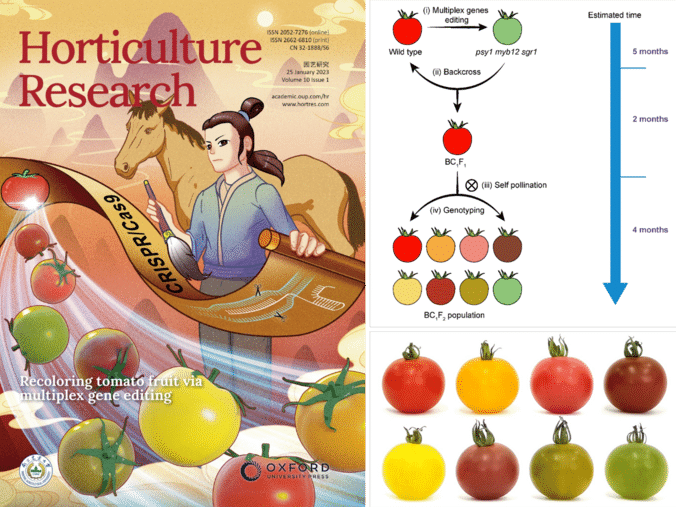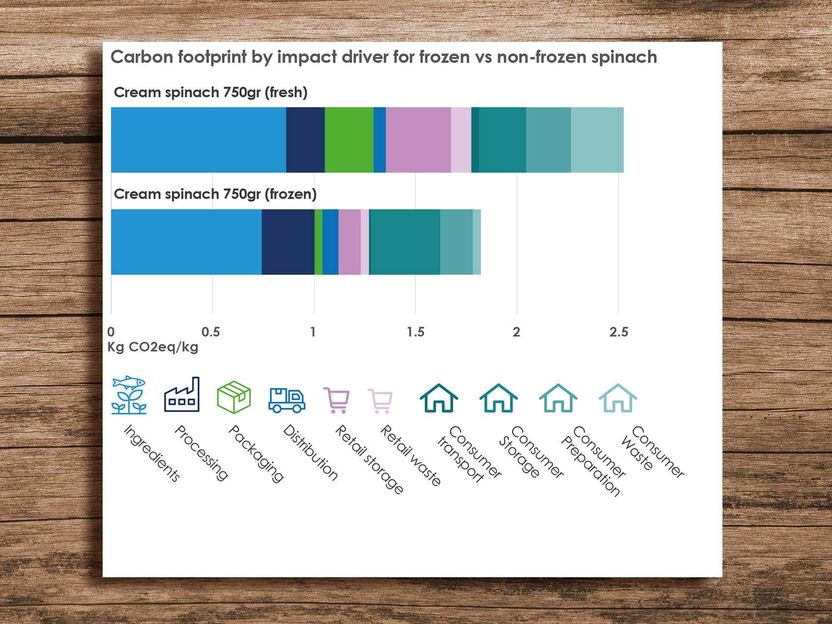Revolutionary Gene Editing Technique Allows for Quick Customization of Tomato Cultivars with Unique Fruit Colors
A recent study delivered by Prof. Chuanyou Li’s group at the Institute of genetics and developmental biology (IGDB) of the Chinese Academy of Sciences (CAS) developed a rapid breeding strategy to generate tomato lines with different colored fruits from red-fruited materials by CRISPR/Cas9-mediated multiplex gene editing. First, a green-fruited triple mutant was created from red-fruited cultivar through simultaneous knockout mutations of PSY1, MYB12, and SGR1. Next, the triple mutant was backcrossed with the wild-type red-fruited plants. Then, the resulting BC1F1 lines were self-pollinated to generate a BC1F2 population segregating the psy1, sgr1, and myb12 mutant alleles. Finally, a series of tomato genotypes with different fruit colors, including red, yellow, pink, brown, light-yellow, pink-brown, yellow-green, and light green, were identified in the BC1F2 population.

Figure: Rapid customization of tomato cultivars with different fruit colors
Nanjing Agricultural University The Academy of Science
Compared to traditional cross-breeding, this strategy requires less time and can obtain transgene-free plants with different fruit colors within a year. Most importantly, it retains the advantages of original cultivar and does not affect other important agronomic traits. This strategy provides a reference for improving multigene-controlled traits by multiplex gene editing, and can be easily extended to other horticultural crops such as fruits, vegetables and flowers.
This work entitled “Recoloring tomato fruit by CRISPR/Cas9-mediated multiplex gene editing” was published in Horticulture Research on January 1, 2023 (DOI: 10.1093/hr/uhac214). Dr. Tianxia Yang, Dr. Muhammad Ali and Dr. Lihao Lin are the first authors. Prof. Chuanyou Li and Dr. Lei Deng are the corresponding authors. This study was supported by grants from the Ministry of Science and Technology of China, the National Natural Science Foundation of China and the Chinese Academy of Sciences.
Original publication
Other news from the department science

Get the food & beverage industry in your inbox
By submitting this form you agree that LUMITOS AG will send you the newsletter(s) selected above by email. Your data will not be passed on to third parties. Your data will be stored and processed in accordance with our data protection regulations. LUMITOS may contact you by email for the purpose of advertising or market and opinion surveys. You can revoke your consent at any time without giving reasons to LUMITOS AG, Ernst-Augustin-Str. 2, 12489 Berlin, Germany or by e-mail at revoke@lumitos.com with effect for the future. In addition, each email contains a link to unsubscribe from the corresponding newsletter.




























































